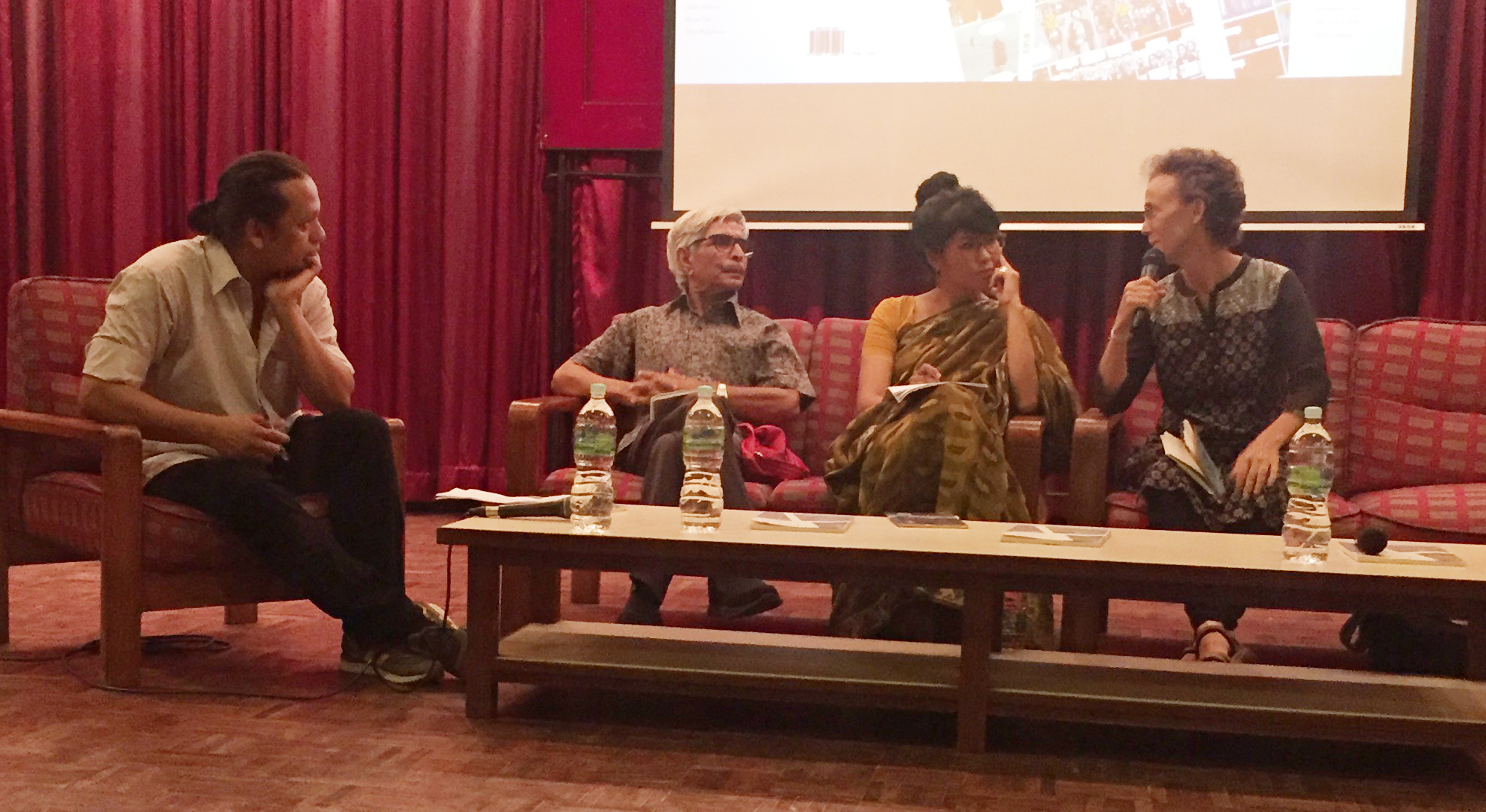Kathmandu, July 16, 2017: The eighth volume of the literary magazine-La.Lit, ‘Translations from the Margins’, guest edited by Manjushree Thapa, was launched last Friday at Nepal Tourism Board, BhrikutiMandap. This particular volume is a collection of translated poems, essays, and stories mostly written and translated by Nepalese who belong to marginalized communities from across the country in order to bring together voices that reflect our country’s vibrant multicultural reality.
The launch followed a panel discussion moderated by Prawin Adhikari with literary figures: Ann Hunkins, Muna Gurung and Khagendra Sangroula on the importance of translation between languages. The panel discussion kicked off with the journey of how the panelists were hooked into the world of translations.
Revelations of a crisis translator
Talking about the differences between translating a literary work and translating realistic voices during crisis, Ann Hunkins, a poet and photographer who has completed a translation of Ramesh Vikal’s Abiral Bagdachha Indrawati, expressed that crisis translations are pretty much challenging and emotionally draining. “I have been a translator during conflicts and I have witnessed people’s tortures and pain. It is a huge responsibility translating during such real moments because you are supposed to convey all their emotions and pains amidst the noisy and uncomfortable situations of conflicts,” she added.
Getting obsessed with Nepali language
Muna Gurung, a writer and translator whose translation of poems by Sulochana Manandhar is being published, revealed about her approach to Nepali, English and Gurung language, “As a Nepali child living in Singapore, I used to speak in Nepali and Gurung language at my home and English at school. But, I was obsessed with Nepali scripts as soon as I was introduced to it. I have always thought Nepali language is like art with its mesmerizing and unique scripts.”
Poem translation the most difficult job
Sharing about the challenging and rewarding aspects of this journey, Ann recalled, “I think poem translation is the most difficult job for a translator. I remember translating Toya Gurung’s poem ‘Dhupi’ from Nepali to English and the colloquial words gave me really hard knocks. Meanwhile, I have to admit Nepali language is a musical language and the richness and variety of this language makes it even more beautiful. So, my ultimate joy always lied in being able to reflect my work accurately not disrupting its supreme beauty.”
Future of translations
Regarding the future of translations, Khagendra Sangroula, a columnist, essayist and novelist whose translation into Nepali of a dozen seminal works of Western thought will be published soon, mentioned, “People are looking for their identity through language today. In the contemporary world, English is a powerful language and has the ability to gobble down all the other languages. Even though, we need to understand that translation doesn’t always revolve around English. Why not translate in internal languages? That way, the legacy can continue spreading love between Nepali citizens.” On this note, Muna added, “Since language is always changing, I am highly optimistic about the future of translations as there will always be a need of translator in such varying fields.”
Muna expressed that translation is a huge responsibility; however, the final translated work always leaves a little stamp of the translator which is enough to keep her going in this journey. Similarly, Khagendra shared, “During every translation work, I did have tough times. I won’t say it was all easy and simple but I have always believed that my translations are what has made me live in the moment, and this happiness is priceless.”
The event also witnessed lively discussions on the risky aspects of translation and the underlying relation between writing and translating, noting the personal experiences of the panelists.
By Drishti Maharjan







